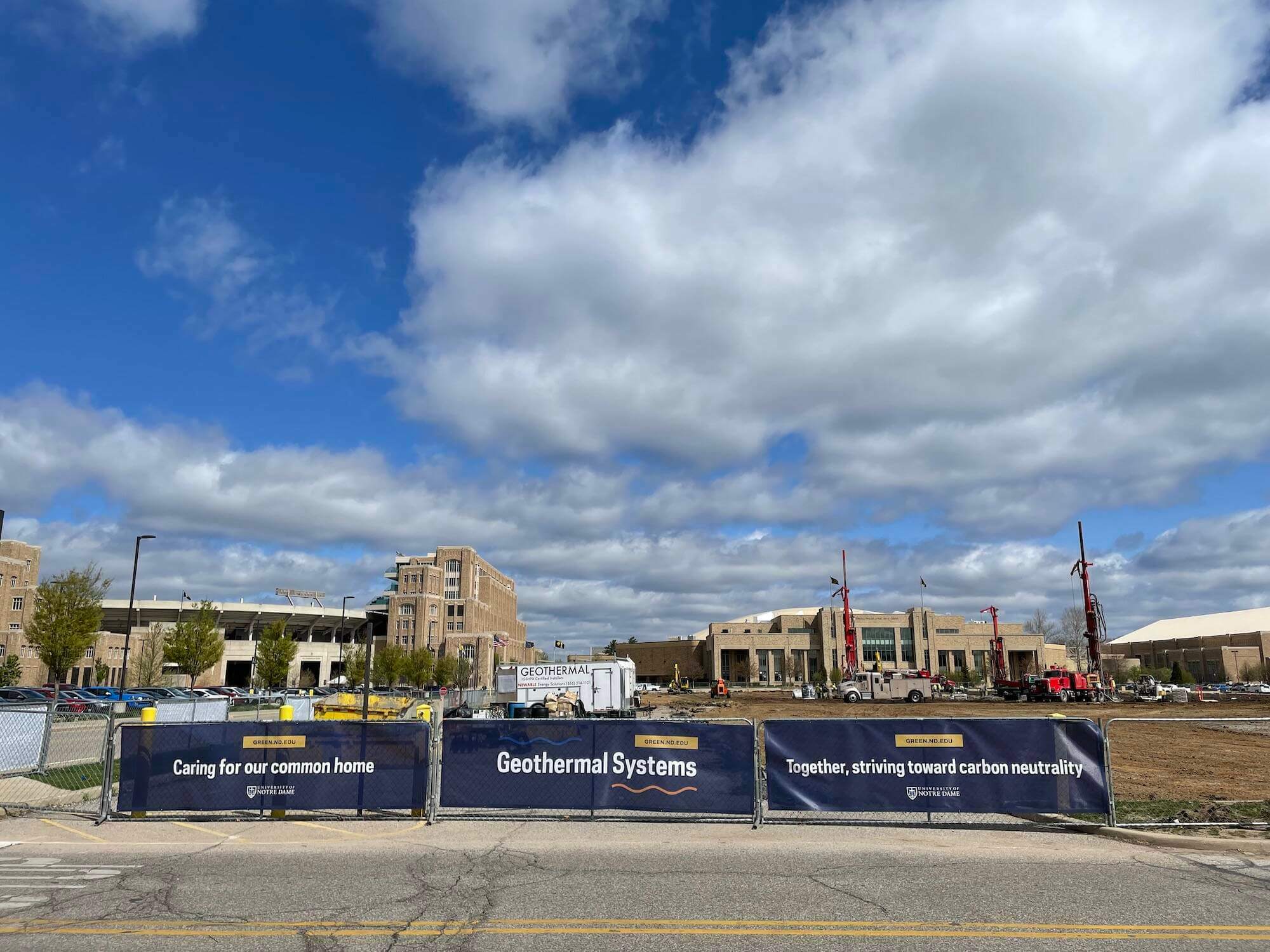
Commuters driving through the south end of campus have likely been impacted by the construction happening in Joyce Lot during the spring and summer of 2023. Despite the minor inconvenience for visitors and daily commuters, the impact of this temporary disruption is massive: the University is undergoing its third geothermal well drilling project. Geothermal systems are a pillar of the University’s plan to reduce its greenhouse gas emissions, nearing ever closer to the goal of becoming carbon neutral by 2050.
What is Geothermal?
Geothermal systems support sustainable energy usage for heating and cooling buildings on campus. By utilizing a network of water-filled pipes buried underground, they take advantage of the year-round 50°F average temperatures below the Earth's surface, circulating water in a closed-loop piping system to a depth of roughly 300 feet before returning it to the surface and distributing it through an energy center. By starting the heating and cooling process at the 50°F baseline, significantly less energy is used to create comfortable building temperatures.
Geothermal At Notre Dame
Notre Dame is committed to investing in renewable energy sources to reach its 2050 carbon neutrality goal. The University installed its first geothermal well in 2017 near McCourtney Hall to support heating and cooling needs for the Ricci Band Building and Pasquerilla Center. Intuitively, the University developed this first well with the capacity to provide support for additional buildings yet to come. By 2020, additional well systems were installed below Ricci Fields and the Stadium. Now, the third installation underway at the Joyce Lot will allow more building temperatures to be efficiently regulated, and will further interconnect the network of geo fields with the hopes of eventually hosting one central system on campus. Construction is expected to be finalized by fall 2023.
Learn more about the University's journey towards carbon neutrality.